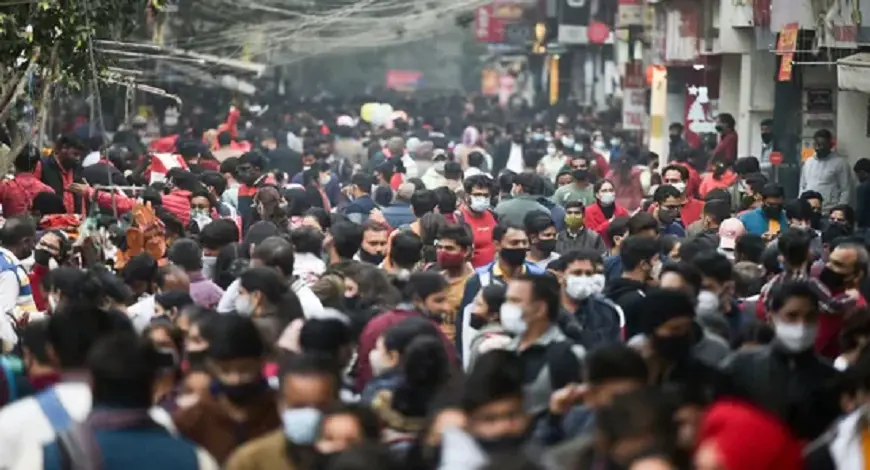

Photo for representation
<p>
India is projected to surpass China as the world&#39;s most populous country in 2023, according to a report released by the United Nations on World Population Day (July 11).</p>
<p>
India&#39;s population stands at 1.412 billion in 2022 compared to China&#39;s 1.426 billion, the report states.</p>
<p>
India is also projected to have a population of 1.668 billion in 2050 which will be far ahead of the corresponding figure for China at 1.317 billion people by the middle of the century, according to the report.</p>
<p>
The World Population Prospects 2022 report projects the world&#39;s population at eight billion on November 15, 2022.</p>
<p>
&ldquo;This year&rsquo;s World Population Day falls during a milestone year, when we anticipate the birth of the Earth&rsquo;s eight billionth inhabitant. This is an occasion to celebrate our diversity, recognise our common humanity, and marvel at advancements in health that have extended lifespans and dramatically reduced maternal and child mortality rates,&rdquo; U.N. Secretary-General Ant&oacute;nio Guterres said.</p>
<p>
&ldquo;At the same time, it is a reminder of our shared responsibility to care for our planet and a moment to reflect on where we still fall short of our commitments to one another,&rdquo; he added.</p>
<p>
The latest projections by the United Nations suggest that the global population could grow to around 8.5 billion in 2030, 9.7 billion in 2050 and 10.4 billion in 2100.</p>
<p>
Central and Southern Asia is expected to become the most populous region in the world by 2037 as the population of Eastern and South-Eastern Asia could start declining by the mid-2030s.</p>
<p>
According to the report, in 2022, the two most populous regions were both in Asia, namely Eastern and South-Eastern Asia with 2.3 billion people (29 per cent of the global population), and Central and Southern Asia with 2.1 billion (26 per cent of the global population).</p>
<p>
China and India, with more than 1.4 billion each, accounted for most of the population in these two regions.</p>
<p>
The report said that the growth of the world population slowed down by more than half after 1965, owing to reduced levels of fertility.</p>
<p>
Globally, the world counts slightly more men (50.3 per cent) than women (49.7 per cent) in 2022. This figure is projected to slowly invert over the course of the century. By 2050, it is expected that the number of women will equal the number of men.</p>
<p>
In 2020, and for the first time since 1950, the rate of population growth fell below 1 per cent per year and it is projected to continue to slow in the next few decades and through the end of this century, the report said.</p>
<p>
In some parts of the world, international migration has become a major component of population change.</p>
<p>
It is estimated that ten countries experienced a net outflow of more than 1 million migrants between 2010 and 2021. In many of these countries, these outflows were due to temporary labour movements, such as Pakistan (net outflow of -16.5 million during 2010-2021), India (-3.5 million), Bangladesh (-2.9 million), Nepal (-1.6 million) and Sri Lanka (-1 million).</p>
<p>
The 46 least developed countries (LDCs) are among the world&#39;s fastest-growing. Many are projected to double in population between 2022 and 2050, putting additional pressure on resources and posing challenges to the achievement of the Sustainable Development Goals (SDGs).</p>
In the aftermath of the deadly terrorist attack in Pahalgam that killed 26, Michael Rubin,…
India has summoned Pakistan's top diplomat in Delhi, Saad Ahmad Warraich, and handed over the…
The Chinese Foreign Ministry spokesperson Guo Jiakun has condemned the terrorist attack in Jammu and…
The Ministry of External Affairs briefed mediapersons on Wednesday about the slew of measures announced…
Prime Minister Narendra Modi chaired a meeting of the Cabinet Committee on Security (CCS) on…
US Vice President JD Vance on Wednesday called Prime Minister Narendra Modi and strongly condemned…